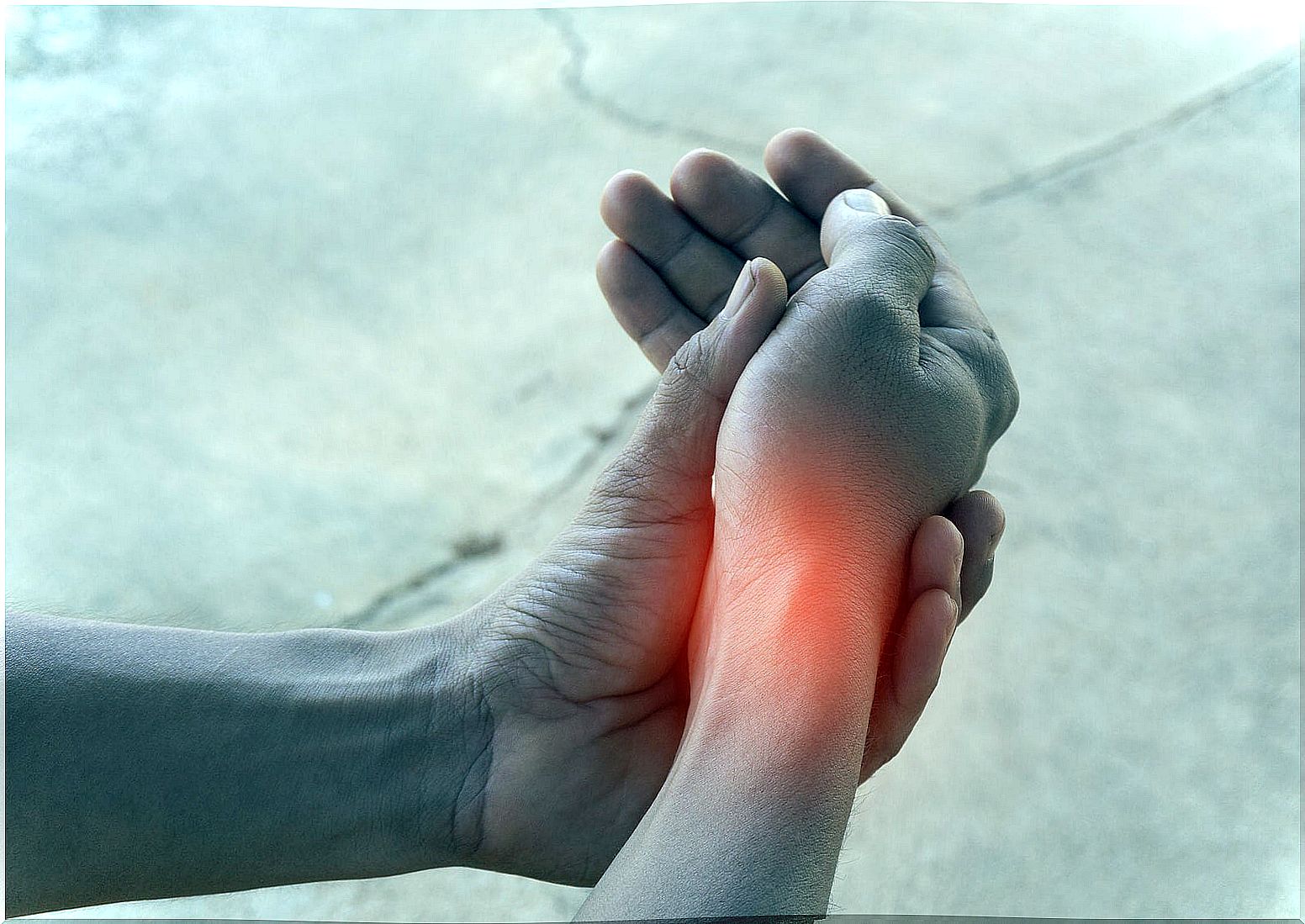What Happens If You Don’t Treat Carpal Tunnel Syndrome
Many people suffer from carpal tunnel syndrome. But what happens if they don’t solve it? The answer is in this article.

Sometimes, due to ignorance, some discomfort in the wrists or hands may be overlooked until they are serious. This is not positive, so in this article we are going to see what happens if you do not treat carpal tunnel syndrome.
This syndrome affects the median nerve in the wrist, which allows movement of the hand. What usually causes this condition is pain, weakness, numbness and tingling. If you don’t treat carpal tunnel syndrome, these symptoms will worsen to the point of causing loss of mobility.
When we make the same movement with the hand and the wrist, this syndrome can appear. In people who write a lot it is usually frequent.
The degrees of carpal tunnel syndrome

If you don’t treat carpal tunnel syndrome, it will get worse. It is important to know that this condition may improve and that it is considered a peripheral neuropathy. Next, we are going to see what it means to be in one or another grade:
- Axonotmesis. We notice weakness, tingling or numbness but it is very slight. In fact, if we let the hand rest, the discomfort disappears. This is the best degree to reverse the problem without medicine or surgery.
- Neuropraxia. The median nerve begins to be somewhat more affected and on the verge of tearing. The pain in the hand increases, as well as the other symptoms. With certain drugs and surgeries the syndrome could be reversed.
- Neurotmesis The nerve has already been torn and the mobility of the fingers is lost. At this stage the chances of repairing the damage are very bleak. In fact, even surgery cannot guarantee a solution.
Now that you know what can happen if you do not treat carpal tunnel syndrome, it is important that in case of any discomfort or pain you seek help. If not, the problem will not reverse itself, but will continue to progress and worsen.
Treatment options
As the scientific literature indicates, there are several treatment options to resolve carpal tunnel syndrome. In addition, we are going to link these options with the different degrees in which they could be applicable.
- Rest. If we are in the axonotmesis, rest may be a good option since, on occasions, carpal tunnel syndrome appears due to the excessive use of the hands.
- Orthotics. If we cannot allow our hands to rest as they need, using a wrist splint or brace can prevent symptoms from worsening.
- Cold and heat. Applying cold to the area will help reduce inflammation and reduce pain. After 48 hours, it is recommended to apply heat to relax the median nerve.
- Medicines. They are only recommended under medical prescription and are usually necessary when we are in neuropraxia and none of the above calms us. They can help reduce inflammation if the use of cold is not successful.

- Physical therapy. Muscle massage or exercises aimed at treating carpal tunnel syndrome can reverse it. Likewise, occupational therapy can help us to acquire habits that prevent this syndrome from reappearing.
- Surgery. It is usually the last of the options considered, since in axonotmesis and neuropraxia it is not usually necessary and in neurotmesis its results may not be as expected.
Some thoughts on this
If you don’t treat carpal tunnel syndrome, you will need to try more treatment options to find a solution that will eradicate the problem. However, we emphasize the great importance of acquiring good habits.
For example, as we have mentioned before, if we are preparing for public exams and we write a lot, we can use a wrist splint as prevention. Also, doing exercises to relax the hand and wrist after writing for a long time can help.
Waiting for carpal tunnel syndrome to make an appearance and for symptoms to worsen is a big mistake. Losing mobility in the fingers can incapacitate the hand forever, causing the fingers to acquire a claw shape without being able to stretch them.









